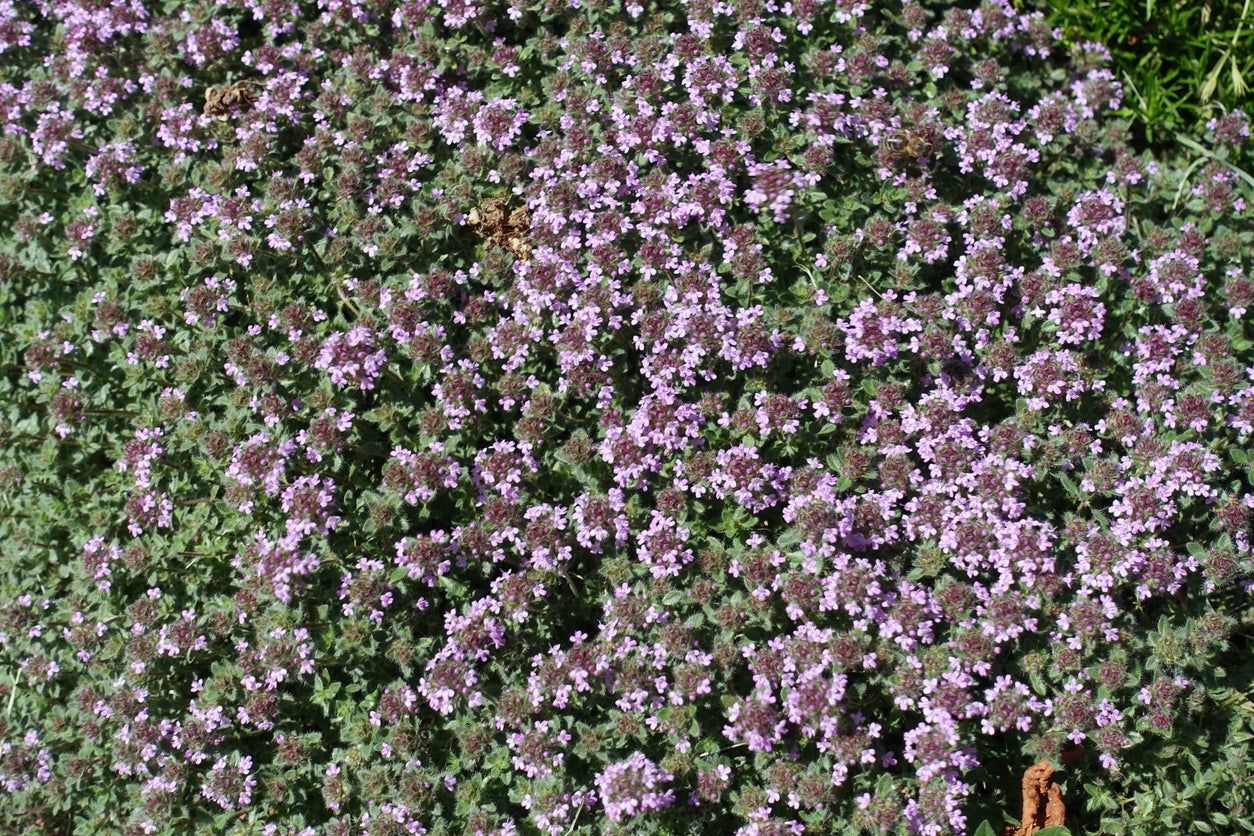Good Bugs And Groundcover Plants – Low Plants That Attract Beneficial Insects


If you're trying to find a sensible solution for a steep slope or you're tired of weeding under a tree, you've probably considered planting groundcovers. These dense plants form thick mats of foliage and discourage weed growth. But did you know that some of these low-growing plants also create a beneficial insect habitat?
Choosing Groundcover Plants for Beneficial Bugs
Why choose a groundcover for “good” bugs? Selecting low plants that attract beneficial insects, like bees, to your yard and garden can improve vegetable yields by increasing pollination.
At the same time, providing a beneficial insect environment for predator bugs helps reduce the number of harmful insects which damage edible crops and flowers. By adding groundcover and low plants that attract beneficial insects, gardeners can reduce or eliminate the need for harmful pesticides.
When selecting groundcover plants for beneficial bugs, look for plant species with thick foliage that bloom profusely for at least part of the season. These types of groundcover will attract species of beneficial adult insects interested in feeding on nectar or pollen. A thick canopy of leaves will help protect the larval stages, many of which consume undesirable bugs like aphids, slugs, and thrips.
Attractive Groundcover for Good Bugs
- Creeping Thyme (Thymus serpyllum) – Sometimes called mother of thyme, this relative of culinary thyme is slow spreading. Profuse late summer blooms of pinks and purples attract pollinators.
- Creeping Phlox (Phlox subulata) – These easy-to-grow perennials are the harbingers of warm spring weather. Creeping phlox often blooms for up to three or four weeks in brilliant shades of pink, purple, blue, or white flowers.
- Sweet Alyssum (Lobularia maritima) – Varieties of this easily cultivated annual flower produce blooms in white or shades of pinks and purple. Often used as a border plant, alyssum attracts aphid-eating flies.
- Creeping Sedum – Sometimes called stonecrop, the many groundcover varieties of sedum bloom with small, star-shaped, yellow flowers during summer months. These hardy, low-maintenance succulents can quickly fill in an area and grow well in dry, sunny locations.
- Creeping Potentilla (Potentilla neumanianna) – Commonly called cinquefoil, the lemony-yellow blooms of this fast-growing groundcover appear from spring until the heat of summer reduces flowering. It spreads by underground runners and, if mowed, will regenerate quickly.
- Wild Geranium (Geranium maculatum) – This shade-loving perennial blooms in early spring with delicate pink flowers. As a native woodland plant, wild geraniums provide beneficial insect habitat for many types of pollinators including butterflies and bumblebees.
- Sweet Woodruff (Galium odoratum) – With its shiny palmate leaves and delicate white flowers, sweet woodruff makes an excellent groundcover for shady areas. It spreads quickly by runners to the point of becoming invasive.
By incorporating groundcover plants for beneficial bugs into the garden design, gardeners do more than reduce mowing or weeding chores. They create beneficial insect habitats which promote environmentally safe gardening practices.
Gardening tips, videos, info and more delivered right to your inbox!
Sign up for the Gardening Know How newsletter today and receive a free copy of our e-book "How to Grow Delicious Tomatoes".

Laura Miller has been gardening all her life. Holding a degree in Biology, Nutrition, and Agriculture, Laura's area of expertise is vegetables, herbs, and all things edible. She lives in Ohio.